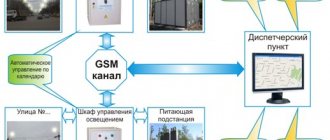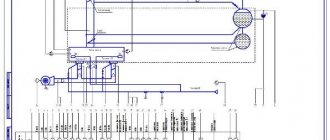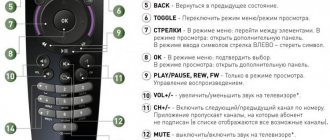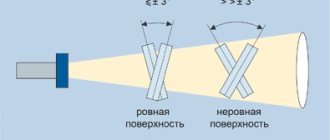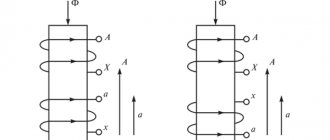Never before has lighting control been so “smart” and convenient! We offer wireless lighting control solutions. Simple installation and clear settings will allow you to bring an unlimited number of ideas to life, even if you don’t understand anything about smart home devices and don’t want to understand the technical features.
Imagine that the light in your home has become “smart”
It doesn't just turn on and off, it fades into bright mornings or warns you when the bath water is too hot, automatically turning on to illuminate your path and turning off when you leave.
No need to rout walls for new wiring
Smart light is wireless, you can easily install it without causing damage to the interior.
Costs no more than 2-3 petrol fills
Even an inexpensive solution will allow you to control the lighting in the room, wherever you are (at home, at work, on vacation).
Easy to install yourself
The connection is so simple that if you know how to set up your TV yourself, you can do everything yourself.
Smart light is affordable and easy
Popular Lighting Control Products
| Smart plug Fibaro The Fibaro Wall Plug module for a socket with smart metering function is the most advanced socket adapter currently available. It is installed between an electrical appliance and an outlet and allows you to turn the appliance on and off remotely from a smartphone, computer or remote control. The device measures the amount of energy consumed by an electrical appliance. Go to product | |
| Built-in dimmer Fibaro Dimmer Installs under an existing wall switch in three minutes. Allows you to turn on, turn off and smoothly adjust the brightness of the lighting. This can be done either locally, using a wall switch, or remotely - from a smartphone, tablet, or computer. Connected lighting sources (chandeliers, sconces, and others) can be used in automatic scenarios for the behavior of a smart home. Go to product | |
| Fibaro RGBW LED strip control module Installs in minutes under an existing wall switch. Allows you to control 4-color LED strips (in addition to standard RGB channels, it supports a white channel), which makes millions of colors available. Color management is possible both from a wall switch and from mobile devices and computers. Ability to create automatic lighting scenarios for different cases. Go to product | |
| Door/window opening sensor Fibaro Door/Window Sensor The sensor is simply glued or screwed in the desired location. Allows you to set up automatic lighting control, such as turning on the lights when you open the door or turning off all lights when you leave the house, or other scenarios. Go to product | |
| Fibaro Eye motion sensor One of the main advantages of Fibaro Motion Sensor is its amazing ability to detect the slightest movement, nothing will escape its attention. Considering that every room in the house is different, you can adjust the sensitivity of the motion sensor to better suit your individual needs and individual situations. Go to product |
Automation of office lighting
Introduction
The project in question began in November 2011 in connection with the move of one company to a new office. A hired designer developed a project for the Director's Reception and the Secretary's office. Everything was beautiful, but for some reason the designer did not care about the ease of use of lighting. There were as many as 17 lighting groups for 2 offices, while a series of switches were scattered around the perimeter of the room far from the workstations of the Director and Secretary.
Figure 1. Layout of the General Director's Reception Room
Figure 2. Lighting groups for the General Director’s Reception and the Secretary’s office
During the day, when natural light changed, I constantly had to be distracted, go to the switches and turn the light on/off, or put up with excessive illumination and the high gluttony of halogen backlights. Additional inconvenience was caused by the large number of buttons; it was quite difficult to remember which switch was responsible for what.
The proposal to automate the lighting of the Reception and Secretary was received with enthusiasm.
Lighting automation
The neutral wire was connected to each switch block in various ways. Single-channel and double-channel relays from Fibaro were installed in all installation boxes. At the entrance, a pocket with a remote control from Aeon labs was placed next to the door.
Figure 3. Aeon labs reception lighting control panel
Duwi switches were installed in the locker room and toilet.
Figure 4. Locker room switch from Duwi
The following scenarios were attached to the 4 buttons of the Aeon labs remote control:
Arrival - the right lighting is turned on, and the locker room Workplace - The lighting of the workplace is turned on, all other lights are turned off Meeting - The lighting above the meeting table is turned on Extended meeting - on particularly cloudy days, the side lighting around the perimeter of the office is additionally turned on The entrance to the locker room is separated from the office by a door - coupe. A z-wave door opening sensor from Everspring was installed on it. This sensor was associated with the locker room switch. When the sliding door is opened, the locker room light turns on, and when the door is closed, it turns off. When leaving the locker room, the door closes and the lights automatically turn off.
The Directors installed an Aeon labs z-wave opening sensor on the toilet door. The operating principle of toilet lighting is described in the article “Review of z-wave door/window opening sensors.”
Figure 5. Aeon labs door open sensor
In the secretary's office, we limited ourselves to installing Duwi switches for lighting, since due to low natural light, the main lighting is on throughout the working day. We also installed a switch to control the lighting of the area next to the waiting sofa. A multi-motion/lighting/temperature sensor was installed in the corner to cover the seated area. Z-wave EZMotion. Its role is to automatically turn on the lights in low light conditions for people waiting in line to see the director.
Figure 6. EZMotion multi-sensor to automate waiting area lighting
In addition, a scheme for manual and automatic control of lighting in this area was subsequently implemented for more accurate sensor operation and additional comfort for visitors. If the secretary was in his place, he would set the Manual mode and turn on the light if necessary. Before leaving his workplace, the secretary set the seat zone to automatic mode.
In two toilet rooms in a common area with washbasins, Everspring SP103 motion sensors were installed, associated with Duwi switches. When entering the toilet room, the light in the toilet turns on and stays on for at least 3 minutes (as long as there is movement plus 3 minutes).
Figure 7. Everspring SP103 motion sensor for restroom lighting automation
Due to frequent visits by employees to the Archive room (the specifics of the organization’s work), an ExpEzmotion multi-motion/light/temperature sensor was installed in it, associated with a Fibaro relay (installed in a mounting box behind a regular switch).
Figure 8. EZMotion multi-sensor for automating archive lighting
Energy control and savings
To control the consumption of electricity spent on lighting, a 3-phase electricity meter was installed in the electrical panel.
Thanks to it, you can monitor in real time the current lighting power consumption and consumed since the beginning of the month (the accumulated data is reset to zero at the beginning of each month). Figure 9. 3-phase electricity meter installed under the electrical panel
To control the corridor lighting at the entrance to the office, the usual switch was replaced with a switch from Duwi; at the other end of the office, at the service exit, a Z-wave Duwi Everlux wall radio transmitter was installed, associated with the main switch, so that the corridor lighting can be controlled from two places.
The cooling and heating water cooler in the reception area was connected via a Z-wave socket switch with an electricity sensor. Measuring the accumulated electricity consumption showed that during non-working hours (from 17-30 to 8-30) the cooler consumes an average of 0.88 kWh (11 W constantly, 510 W during heating/cooling). During a non-working day, about 1,408 kWh is wasted.
Considering that in 2012 there are 248 working days and 118 holidays, we can calculate the annual excessive consumption of electricity by one cooler: 248*0.88+118*1.408=384 kW*H. Considering the cost of kW*H for Moscow is 4.02 rubles, we get an overrun in rubles – 1550 rubles.
Thanks to the configured scenario for the cooler to be automatically turned off by the outlet module at 5:30 p.m., and turned on at 8:30 a.m. only on weekdays, excess consumption turns into savings. Using this scenario, up to 384 kWh of electricity or almost 1,550 rubles will be saved annually. For this money you can buy a Z-wave Everspring socket switch or a Z-wave TKBHome socket switch.
Graphical interface for remote control
At the moment, the office automation system is controlled by the HomeSeer program. The HStouch interface configurator has developed an interface for managing and monitoring the state of the office.
Figure 10. Office space plan in HStouch program
On the plan you can see the status of all motion sensors, as well as remotely monitor and manage the lighting groups included in the system.
Also, using the software interface, you can see which computers are turned on, i.e. essentially remotely monitor discipline in the office. The configured script automatically turns off all computers that are not turned off 2 hours after the end of the working day.
A switched-on office computer without load consumes about 50-60 W, so one computer left switched on overnight will consume about 0.8 kWh.
The last employee leaving the office automatically turns off all lights in the office.
The system automatically accumulates information about the current power consumption of office lighting, the temperature of the reception area, and the number of computers turned on. Using these indicators, you can get a graphical representation of data for several hours, a day, a week or a month.
Figure 11. Graphs of changes from top to bottom: current lighting consumption power, number of computers turned on, reception room temperature.
Conclusion
The total cost of the equipment was 60,750 rubles. The described automation system has been operating successfully for 9 months. The system turned out to be very flexible and easily scalable; if necessary, it is quite easy to expand. Overall, this project turned out to be very interesting and in demand.
Turn everything off with one click
One button replaces many actions
If your child is afraid to fall asleep in the dark, then a smart light will correct the situation. Using dimmers, set up a gradual dimming of the lighting in the children's room for 20 or 30 minutes, or a timer on the night light, and your baby will fall asleep without even noticing. Place additional battery-operated wall switches close to your bed, sofa or desk. No need to do any additional wiring - just glue them in a convenient place. Are you leaving your apartment and heading to the office? The smart home will turn off all the lights in the house. You no longer have to worry about it and go through all the rooms.
Lighting system control
The automatic system throughout the home is controlled using both a multifunctional touch panel and a standard electrical switch. For example, if the touch panel fails, you can control the lamps using a mechanical switch. The multifunctional touch control panel is easy to use and has a simple interface.
Another way to control your smart lighting system is with your iPad. In the iPad interface, you can select a separate lamp or a separate room and configure the parameters of the selected element.
You will have to spend a lot of money to purchase and install automatic smart lighting systems, but they will quickly pay for themselves through energy savings. In addition, a cozy and comfortable environment will be created in the house, which will delight its owners.
The use of smart lighting is convenient both in apartments and private houses. With the help of modern “smart home” lighting systems, you can bring any idea to life, because the system’s capabilities are limitless.
Presence simulation
Automatic light control in your absence
Some areas of the house do not need lights on all the time. In a smart home, the lights in the closet, hallway, hallway and stairs turn on only in your presence and automatically turn off in your absence after a specified time interval. This is especially true when your hands are full, for example with bags. Now every morning is perfect. Whatever the weather, you'll wake up to a soft, warm light, similar to a sunrise, that fades in brightness over 15 minutes. When you get up at night, you are unlikely to want to turn on the lights at full brightness. The smart home will illuminate your path to the bathroom, limiting the light intensity to 30%, allowing your eyes to get used to the lighting and not get lost in the dark. It selects the brightness of the lights depending on the time of day or other factors. No need to look for switches in the dark - the smart home itself will illuminate your path. The system can simulate your presence, turning on lights, music, and TV at a designated time - as if you were at home.
Something about saving
According to numerous independent studies, through the use of automatic lighting control systems, electricity costs can be reduced by up to 70% . Of course, to achieve such record-breaking figures, it will be necessary to use the entire arsenal of modern CAs, not to mention impeccably performed electrical installation work. However, if the equipment is properly configured, it can fully pay for itself in just a few years. And if we also take into account the fact that every year these systems acquire an increasingly larger set of useful functions, then the rationality of their use for large industrial complexes becomes obvious.
How it works?
Lighting in the home, as well as outdoor lighting control systems, are built from separate devices that communicate with each other via radio waves and work together as a single system. “Smart Executors”, “Sense Organs” and “Managing Assistants” can work both independently, directly sending commands to connected devices, and through the “Central Brain”.
- Smartphones, tablets, computers
- Brain
- Sense organs
- Smart Performers
- Remote controls
The controller makes it possible to control lighting through mobile devices or a computer - turn lights on and off from any room, launch lighting scenarios, find out where which devices are turned on, and also receive messages from the system.
These are battery-powered control panels and wall switches. They carry out remote control of lighting via radio: the remote control and wall switches send your commands to the system devices.
This is a lighting and any equipment control controller that allows you to connect up to 232 network devices into a single system. There are both simple and very inexpensive controllers (for example, the Z-Wave.Me Z-Stick USB stick) and real command centers (Fibaro Home Center 2 controller).
These are sensors for motion, temperature, humidity, door openings, water leaks, etc. “Sense organs” monitor everything that happens in the house and send the necessary information to other devices.
These are relays, dimmers, socket modules and switch modules. They turn it on, off, change the brightness of the lighting, control the amount of electricity consumed, and all this for existing chandeliers, sconces and other lamps.
Automation equipment
The automated control system can be divided into three levels of interaction.
The third (lower) level - information collection and physical management, includes:
- Measuring instruments, current and voltage transformers, ammeters;
- Tele-alarm sensors;
- Actuator drives, etc.
The second (middle) level - management and transmission of information to subsystems, includes:
- Automation cabinets with a control controller;
- Communication equipment;
- Electric energy meters connected to the automation network.
For autonomous operation of the system, two levels of data are sufficient. To integrate into the building automation system, the first control level - the upper one, it is software installed on control servers, it also includes a dispatcher's workstation, protocol conversion tools, additional signaling devices, including its status and operating modes .
The exchange of information between the first and third levels occurs through the second.
Installation in three minutes! And not a single new wire!
You don't need a soldering iron or extra wires. All light control is carried out by simple modules, which are very easily mounted in socket boxes to existing sockets or switches.
Just. Safely. Reliable | Do it gradually. In parts | Now smart light, and then smart home |
| Wireless lighting control is carried out using simple, low-power and absolutely safe radio waves. And it doesn’t matter what kind of walls you have - even if the house has a lot of solid concrete floors - the system will work, since it is built on the principle of “cells”. Each device controls the lighting via a radio channel; it receives and transmits the signal to the desired point “by relay”. Even if some equipment fails, the team will simply take a different route. | We offer competent lighting control systems that will allow you to install one and the simplest thing now, and control the rest of the light as needed, desired and possible. You don't have to buy and make new lighting - smart lighting allows you to use what you already have. You don’t need to think in advance what everything will be like in the end - you can add, remove and reconfigure something at any time. You can do all this yourself, without resorting to the services of expensive craftsmen every time. | All system devices can control not only lighting, but almost any electronic equipment. Therefore, by now making even very simple lighting control in your apartment, you are laying the foundation of a real smart home. Warm floors, curtains, a refrigerator, an irrigation system, video surveillance, doors, a TV and much more will also become “smart”. For example, if a pipe breaks, the smart home will turn off the water itself. It will turn off the iron if you have already left for work or greet guests if you have not returned yet. |
You can now buy equipment for remote control and lighting automation in our online store.
If you don’t have the desire or ability to understand all the intricacies and install the equipment yourself, we can do it for you.
Automated outdoor lighting control system
Automated outdoor lighting control system
ASUNO, based on TOPAZ telemechanics kits, performs lighting control in manual and automatic modes, provides monitoring of primary and secondary equipment of the outdoor lighting system, including monitoring the position of switching devices, operating mode (manual/automatic), network failures (turning off lamps).
ASUNO TOPAZ automates processes:
- monitoring the equipment of food points (PP) with centralized collection and processing of data at the DP;
- group and separate (addressed) control from the DP of head and cascade PPs with the ability to block individual PPs and groups of PPs;
- displaying the received information in graphic form (graphs, histograms, mnemonic diagrams);
- ensuring information security during the operation of the system and exchange of information with the subsystems of the integrated information and control system for outdoor lighting (IIMS NO) and other systems of the municipal services complex;
- maintaining, displaying and printing protocols of events and operator actions;
- printing reports;
- ensuring the possibility of data exchange with other information systems of the city;
- improving the performance characteristics of the outdoor lighting system.
TM kits based on specialized controllers and intelligent input/output modules that perform the functions of consolidating information and executing control algorithms. The signal sources for them are mechanical, electrical sensors, and measuring transducers that provide the formation of teleinformation. The controls are contactors that ensure the execution of telecontrol signals. The devices provide functions for monitoring status and transmitting data to the upper level, functions of tele-alarm, tele-measurement and tele-control, registration of emergency events, such as:
- monitoring phase voltage on power feeder fuses;
- control of phase voltage on the linear poles of contactors;
- control of phase voltage on fuses of outgoing NO lines;
- monitoring the position of contactors KTv (evening), KTn (night);
- monitoring of excess phase voltage;
- control of unauthorized access sensors;
- control of fire sensors;
- telecontrol of evening and night bus contactors;
- control of the PP in various modes;
- ASUNO data transmission channel via GSM/GPRS (backup);
- switching to offline mode when communication with the DP is lost;
- ensuring autonomous operation of the SHUNO from the emergency power system in the event of a complete loss of power supply.
TOPAZ IEC DAS data collection and transmission devices are used as a TM controller
.
TOPAZ controllers provide all the necessary functions for collecting and transmitting data and processing ASUNO operating algorithms. TOPAZ DOUT8/16
modules are used as telecontrol modules .
The TM controller ensures the execution of telecontrol commands for the “night” and “evening” contactors in accordance with the specified mode: “off”, “evening” or “night” in the following modes: - Autonomous (mode A) - the operation of the PP is carried out according to the calendar entered into the TM controller .
— Teleaddress (TA mode) – work on “address” commands with DP. — Telecascade (TC mode) – operation of a cascade PP on a “quit” basis, i.e. Switching on and off the contactors is carried out from the NO line of the higher one in the PP cascade. — Manual – work from the controls of the TM kit. TOPAZ DIN16/32 modules are used as telesignaling modules
. Unauthorized access sensors (ATS), fire sensors and volumetric security detectors are connected to the remote alarm module.
To carry out accounting of consumed electricity and telemetering of the main parameters of the electrical network, the project provides for connection to electricity meters. The alarm signal - “exceeding the phase voltage level” is analyzed by an algorithm for processing electric meter readings.
For ASUNO data, the main communication channel can be implemented as an Ethernet channel (copper/optics) using TOPAZ SW5xx
, and via GSM/GPRS using
TOPAZ GSM
, the backup communication channel is usually carried out via GSM/GPRS. The OPC UA protocol is used to exchange data with the upper level of the automated control system, and the IEC 60870-5-104 protocol is used for the automated control system.
Automated workstations (AWS) of personnel are equipped with specialized TOPAZ SCADA software, which provides information to users in a form that is easy to understand. Operational data on the state of the equipment is archived and displayed on the dispatcher’s screen in tabular form and in the form of mnemonic diagrams. Emergency or critical situations are accompanied by voice messages, and reports are generated on the operation of the equipment.
Among the advantages of ASUNO systems based on TOPAZ are:
Easy integration
— Integration and data exchange with top-level control systems based on standard modern protocols, such as Ethernet, GSM, 3G/ GPRS/LTE, the ability to integrate automated accounting systems.
Functionality and cost-effectiveness
— A large selection of solutions of varying functionality and cost for specific customer requirements.
Energy efficiency
— Reducing lighting costs by up to 50% through the use of modern technologies
Autonomy
— Work offline according to a given schedule, including when communication with the control center is lost
Equipment condition monitoring and statistical data collection
— Wide functionality for diagnostics, monitoring and control of outdoor lighting
